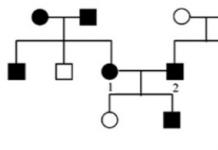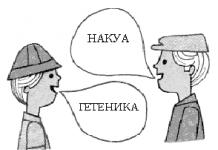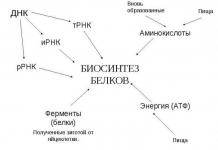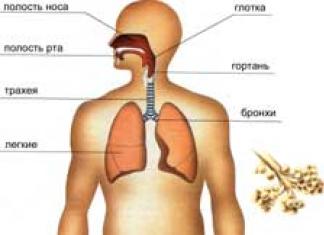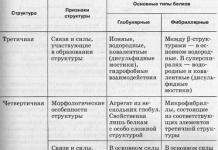Federal Agency for Education
State educational institution
Higher professional education
Penza State University
Faculty of Economics and Management
Department: "Marketing"
on the course "Psychodiagnostics"
"Psychodiagnostic possibilities of conversation"
Made by a student of the group
07EO1 Sorokovikova Ya.D.
Checked Ph.D. Rozhnov
Ruslan Vladimirovich
Introduction
Basic types of conversations
Conversation Structure
Types of conversations
Reflective and non-reflective listening
Verbal communication during a conversation
Non-verbal communication during a conversation
Classification of question types
Conversation Examples
Bibliographic list
Introduction
Conversation method- a psychological verbal-communicative method, which consists in conducting a thematically oriented dialogue between a psychologist and a respondent in order to obtain information from the latter.
Conversation is a method of collecting primary data based on verbal communication. It, subject to certain rules, makes it possible to obtain no less reliable information than in observations about past and present events, about stable inclinations, motives for certain actions, about subjective states.
It would be a mistake to think that conversation is the easiest method to use. The art of using this method is to know how to ask, what questions to ask, how to make sure you can trust the answers you get. It is very important that the conversation does not turn into an interrogation, since its effectiveness in this case is very low.
Conversation as a method of psychodiagnostics has some differences in the form and nature of the organization.
The possibilities of conversation as a dialogue - a tool for meeting a person with a person - are associated, in particular, with the breadth of the choice of the type of conversation in the spectrum from "completely controlled" to "practically free". The main criteria for classifying a conversation as a certain type are the features of a pre-prepared plan (program and strategy) and the nature of the standardization of the conversation, i.e. its tactics. Under the program and strategy, as a rule, they mean a set of semantic topics compiled by the questioner in accordance with the goals and objectives of the conversation and the sequence of movement between them. The higher the degree of standardization of the conversation, the more strict, defined and unchanging the set and form of questions in it, i.e., the more rigid and limited is the tactics of the questioner. The standardization of the conversation also means that the initiative in it moves to the side of the questioner.
Basic types of conversations
A fully controlled conversation involves a rigid program, strategy and tactics;
standardized conversation - persistent program, strategy and tactics;
partially standardized - stable program and strategy, tactics are much freer;
free - the program and strategy are not predetermined, or only in general terms, the tactics are completely free.
practically free conversation - the absence of a pre-formulated program and the presence of an initiative position in the conversation with the one with whom it is carried out.
Fully and partly standardized conversation allows comparison of different people; conversations of this type are more capacious with respect to time, may draw on less experience of the questioner, and limit unintended effects on the subject.
However, their great disadvantage is that they do not seem to be a completely natural procedure, having a more or less pronounced connotation of an examination survey, and therefore fettering immediacy and triggering defense mechanisms.
As a rule, this type of conversation is resorted to if the interviewers have already established cooperation with the interlocutor, the problem under study is simple and is rather partial.
A conversation of a free type is always focused on a particular given interlocutor. It allows you to receive a lot of data not only directly, but also indirectly, maintain contact with the interlocutor, has a strong psychotherapeutic content, and ensures high spontaneity in the manifestation of significant signs. This type of conversation is characterized by especially high requirements for professional maturity and the level of the questioner, his experience and ability to use the conversation creatively.
In general, the procedure for conducting a conversation suggests the possibility of including various modifications in it - tactics that make it possible to especially enrich its content. So, in conversations with children, dolls, various toys, paper and pencil, and dramatic scenes justify themselves well. Similar techniques are also possible in conversations with adults; it is only necessary that they organically enter the conversation system. The presentation of specific material (for example, a scale) or a discussion of the content of the drawing just made by the subject becomes not only a “hook” for the further course of the conversation, deploying its programs, but also allows you to obtain additional indirect data about the subject.
2. Structure of the conversation
Despite the obvious variety of types of conversation, they all have a number of permanent structural blocks, the consistent movement along which ensures the complete integrity of the conversation.
The introductory part of the conversation plays a very important role in the composition. It is here that it is necessary to interest the interlocutor, to involve him in cooperation, that is, “to set him up for joint work.
What matters is who initiated the conversation. If it takes place on the initiative of a psychologist, then its introductory part should interest the interlocutor in the topic of the upcoming conversation, arouse the desire to participate in it, and make clear the significance of his personal participation in the conversation. Most often this is achieved by appealing to the interlocutor's past experience, by showing a benevolent interest in his views, assessments, and opinions.
The subject is also informed about the approximate duration of the conversation, its anonymity, and, if possible, about its goals and further use of the results.
If the initiator of the upcoming conversation is not the psychologist himself, but his interlocutor, who turns to him about his problems, then the introductory part of the conversation should clearly demonstrate mainly the following: that the psychologist is tactful and careful about the positions of the interlocutor, he does not condemn anything, but also does not justifies, accepting him as he is.
In the introductory part of the conversation, the first test of its stylization takes place. After all, the set of expressions and turns used by the psychologist, the appeal to the interlocutor depend on the age of the latter, gender, social status, living environment, level of knowledge. In other words, the vocabulary, style, conceptual form of statements should evoke and maintain a positive reaction in the interlocutor and a desire to give complete and true information.
The duration and content of the introductory part of the conversation fundamentally depend on whether it will be the only one with this interlocutor or whether it can develop; what are the objectives of the study, etc.
At the initial stage of the conversation, the non-verbal behavior of the psychologist plays a special role in establishing and maintaining contact, indicating understanding and support of the interlocutor.
It is impossible to give a ready-made algorithm for the introductory part of the conversation, a repertoire of phrases and statements. It is important to have a clear idea of its goals and objectives in this conversation. Their consistent implementation, establishing a strong contact with the interlocutor allows you to move on to the next, second stage.
It is characterized by the presence of general open questions on the topic of the conversation, causing as many free statements as possible by the interlocutor, his presentation of his thoughts and experiences. This tactic allows the psychologist to accumulate certain factual event information.
Successful completion of this task allows you to move on to the stage of a detailed direct discussion of the main topic of the conversation (This logic of the development of the conversation is also implemented within the development of each private semantic topic: one should move from general open questions to more specific, specific ones). Thus, the third stage of the conversation is a detailed study of the content of the issues under discussion.
This is the culmination of the conversation, one of its most difficult stages, since here everything depends only on the psychologist, on his ability to ask questions, listen to answers, and observe the behavior of the interlocutor. The content of the stage of such a study is completely determined by the specific goals and objectives of this conversation.
The final phase is the end of the conversation. The transition to it is possible after the successful and sufficiently complete completion of the previous stage of the study. As a rule, in one form or another, attempts are made to ease the tension that arises during the conversation, and appreciation for cooperation is expressed. If the conversation involves its subsequent continuation, then its completion should keep the interlocutor ready for further joint work.
Of course, the described stages of the conversation do not have rigid boundaries. The transitions between them are gradual and smooth. However, "jumping" through the individual phases of the conversation can lead to a sharp decrease in the reliability of the data received, disrupt the process of communication, the dialogue of the interlocutors.
3. Types of conversation
Conversations differ depending on the psychological task pursued. There are the following types:
Psychodiagnostic the field of the consumer and the competence in communicating with clients of a specialist in the field of service and tourism
Coursework >> PsychologyAnd the development of a system of personality relationships. Psychodiagnostic consumer field 1.1 Needs, motives ... needs of the client. Thereby maybe establishing long-term relationships with the client... , from tour guide conversations to the article in the central...
Opportunities Correction of interpersonal relations in families of children with delayed speech development by means of play therapy
Thesis >> PsychologyAnd V, V. Stolin is psychodiagnostic a tool focused on identifying... development by providing them with relevant opportunities training) play therapy in ... (consultations on request, questionnaires, conversation about a child with a parent about his...
Problems of professional psychological selection of candidates for the service of practical psychologists
Creative work >> PsychologyA preliminary idea about the subject is being formed psychodiagnostic examinations. Autobiographies, questionnaires, ... are studied, it is effectively combined with the method of observation. Opportunities conversations how the dialogues relate, in particular, to...
Therapeutic conversation
Experimental conversation (for the purpose of testing experimental hypotheses)
Autobiographical conversation
Collection of subjective anamnesis (collection of information about the personality of the subject)
Collecting an objective anamnesis (gathering information about familiar subjects) aimed at studying public opinion. 0main destinations psychodiagnostic works include...
The diagnostic conversation “My circle of friends” was developed under the guidance of T. Yu. Andrushchenko [Andrushchenko T. Yu., 1999]. The conversation makes it possible to reveal the nature of the child's experiences of relationships with the adults and children around him. By correlating the picture of the child's inner experiences with the tasks of development in a particular period of his life, the psychologist can determine the degree of well-being of the emerging conditions of age and personality formation. An important feature of the methodology is that the child's social circle being examined goes far beyond the family: the family appears inextricably linked with other areas of the child's life - the school and the yard.
test material
Standard sheet with the image of concentric large and two smaller circles, crossed by two - horizontal and vertical - lines, two colored pencils (dark and light).
Procedure for conducting a conversation
The psychologist, using graphic techniques (color, shading intensity, etc.), reveals the child's social circle and the nature of his interaction with others (peers, parents, teachers) in a conversation. The conversation is structured as shown in Table. 3.
| Conversation stage | Psychologist's motivational statements | Psychologist's actions |
| Identification of the circle of likes / dislikes | “Let's designate in your circle people with whom you have developed good relations, and those with whom communication upsets you. Let's use two pencils: dark - "unfriendly", "unpleasant" and light - "joyful", "friendly"" | In the course of shading the rectangles with a red or blue pencil, the psychologist finds out the details, circumstances, and nature of the situation. With the help of the hatching frequency, the expressiveness of the modality of experiences is revealed. The child's statements are recorded in the protocol. |
| Identification of the measure of mutual acceptance of participants in communication from the point of view of the child | “Let's draw two more circles in a large circle: one in the middle and one more, small, in the center, we will place you here, write your name. With the help of two pencils, let's show who relates to whom, who brings joy to each other more, who and how unpleasant each other " | With the help of a line of the corresponding color, the modality of the relationship (sympathy / antipathy) between the participants in the social circle is shown. With the help of an arrow, the direction and measure of the severity of relations are indicated (up to the inner or outer circle, etc.) |
| Establishing contact | “I know that any person is not very fond of answering questions from a stranger. Let's better together we will try to portray your life, and then we will discuss some interesting and important moments of it. | Organization of cooperation with the child, removal of alertness inherent in the beginning of communication |
| Building a circle (“house”) of communication | “Let's imagine with whom and where you have to communicate throughout the day, we will find a place for everyone (“home”) in this circle of your communication” | Draws (or offers ready) a circle (see fig.). Divides (or explains the principle of separation) the circle into sectors (spheres of communication). The vertical line separates the "school" and "out of school" sectors. The horizontal line highlights the sectors "peers", "adults" |
| "Settlement" of the social circle | “Now you need to “populate” each “house” with people with whom you have to deal more closely, these can be people you like (friends, buddies), or there may be unpleasant ones among them, you would not want to communicate with them, but for a variety of reasons." | “Introduces” into the circle of communication all the children and adults named by the child with the help of a symbol (a rectangle on a circle). Finds out the age of the children, the circumstances of the interaction. The child's statements are recorded in the protocol. |
Analysis of the content of the conversation
A qualitative analysis of the course and results of the conversation (features of the teenager's behavior when filling out the social circle together with the psychologist, the nature of his statements, the result of the work) suggests:
- comparison of the completeness of the interaction of the child with others in different areas of communication;
- comparing the nature of the child's experiences of his interaction with others in different areas, identifying personally significant relationships, their analysis from the point of view of the tasks of age development;
- revealing the child's attitude towards himself as a subject of communication (acceptance of himself, position in communication, etc.);
- allocation of a zone of trouble in a social situation times orgy (absence or deficiency of interaction, difficulties, conflicts of communication, etc.).
We will demonstrate the possibilities of the methodology on a specific consultative example [see: Andrushchenko T.Yu., 1998].
An example of using the technique
Treatment history
Consulting LudaS. Luda went to the consultation reluctantly, she cried. There are three children in the family. Luda is the eldest daughter from her first marriage, she is 10 years old, two other children are small: a boy is 3 years old, a girl is 9 months old.
The mother (an engineer, candidate of sciences) complained about the girl's disobedience, failure to perform household duties, inability to stand up for herself, and frequent tearfulness. The mother is dissatisfied with her daughter, her appearance (full), considers her a “weak personality”, does not see any advantages, believes that she is cunning, pretending to be a “victim”, provoking pity from others. Both in the general education and in the music school, the girl studies well, writes poetry.
Diagnostic stage of work
According to the Cattell Personality Questionnairepronounced indicators are A, C, D, G, O, Q 4, which indicates high internal tension, anxiety, concern (O \u003d 10, Q 4 \u003d 8), self-doubt, sensitivity (C \u003d 2, O \u003d 10), reactivity of behavior, mild excitability (D = 8), presence of conflicts in society, poor orientation in interpersonal relationships (A = 2, G = 3).
In the drawing of a non-existent animalthe girl depicted Xlemyshar with five large eyes. Commenting on the origin of the name (“a mixture of a cat, a dog, a lion, a hedgehog, a mouse”), Luda emphasized that he “is afraid of everything like a mouse, but defends himself.” In the story about the animal, she placed him to live in a bottomless cave, she believes that he has "more enemies than friends." Her animal hates “enmity and fighting, it doesn’t even know how to defend itself, it fights with its eyes closed so as not to see that it hurts others, as it is compassionate”, it is afraid of “losing friends, as enemies will fly in, and it is defenseless”. This technique revealed the girl's dependent position on adults and strong people, internal self-doubt.
IN homework (write about your hardships and joys) girl to adversity relates: frequent quarrels with my brother, the illness of my beloved teacher, “they replaced our teacher”, “no one is friends with me”, “meeting with Katya G.”.
These hardships lie in the areas of communication at home and at school. The nature of adversity shows the importance for the girl of the personality of the teacher (she cried when she found out about the illness), the presence of conflicts with a new teacher, not comparable with the previous teacher, the presence of dissatisfaction and anxiety about the lack of friendly ties with peers.
The nature of joys is again connected with the new teacher (1st place); with events in the family: the birth of a sister and the defense of a dissertation by her mother (2nd place); with trips: to the camp, to the forest (3rd place) and acquisitions (donated by corals). As can be seen from the above events, the sphere of communication with peers has not been updated.
Thus, the data collected using these methods revealed the general unhappiness of Luda in society, but it was possible to find out a specific picture of the girl’s inner world with all her variety of interpersonal connections during the “graphic conversation”.
The use of this methodological procedure made it possible to indirectly prepare Luda for a discussion of her actual experiences.
The results of the joint filling of the “circle of communication” are presented in Figure 10. The figure shows the difference in the breadth and nature of the interaction.
The closest social circle is at home, here the girl singled out eight people with whom, in her opinion, warm, kind relations developed, especially she singles out her mother, one of the grandmothers, her nine-month-old sister and her cousin; only one person in the house - the brother of three - brings big trouble.
There are few friends in the yard, two of them are younger (seven years old), of her peers she likes only one girl, meetings with which are episodic, the connection is shallow.
Luda's situation at school is unfavorable in terms of communication both with her peers and with teachers. At school, out of the five named peers, two bring great grief, communication with both is mutually unpleasant. These girls actively dislike her, tease her, call them names, and seem to despise her. Three classmates are included in the circle of her successful communication, but relations with them cannot be called friendship. To two, only a one-sided arrow is indicated from the side of Luda, and to one - although it is bilateral, but the relationship is not close. Luda considers herself unworthy of her: "She is an excellent student, too refined for me."
Rice. 10. Circle of communication Lyuda S. Symbols: the bold line of the arrow indicates a dark ("unfavorable") color, a thin line - a light ("favorable") color; dark rectangle - a sign of frequent shading with an "unfavorable" color, a gray rectangle - frequent shading with a "favorable" color
In the course of filling in the “social circle”, it was possible to find out the complete isolation of the girl from her classmates, her forced loneliness.school (“I stand alone at breaks, I don’t talk to anyone”), differences in interests (“they are not interested in me”), in tastes (“they dress fashionably, but I don’t like them”).
The importance of communication with teachers for Luda is great, she named seven teachers, two of them cause deep negative feelings. To the teacher of the 3rd grade, referring to the girl, according to her, well, Luda does not hide her anger. She also has a negative attitude towards the new teacher, who for a long time replaces her beloved teacher who fell ill: “He treats me like furniture, like a table that needs sawing legs.” Relationships with only one teacher (who is ill) make the girl happy: this is her idol, who patronizes, recognizes, understands. The girl is having a hard time with her illness, does not sleep at night, cries, writes poetry for her and dedicates prose to her, constantly inquires about her recovery, and looks forward to her return to class.
So Thus, the introduction of a methodical technique into the consultant's work, where the circle of communication was graphically depicted, made it possible to organize a confidential conversation, during which a social situation of development that was unfavorable for a child of this age was revealed.
The following facts testify to this:
- firstly, the girl has not realized the need for communication with her peers, which grows in preadolescence, and a negative experience of communication with them is fixed;
- secondly, a long-term conflict in the family was revealed, associated with a competitive relationship with a brother, which became aggravated in connection with the birth of another child. From the side of the mother, new, increased demands began to be made to the girl, with which she could not cope. The experience of an unsuccessful struggle for the attention and love of loved ones is fixed;
- thirdly, the girl compensates for dissatisfaction in other areas of communication with an exorbitant, exalted attitude towards the teacher, which is not typical for this age. The need for love and affection for the teacher is compulsive.
Iovlev B.V., Shchelkova O.Yu. (St. Petersburg)
Iovlev Boris Veniaminovich
Candidate of Medical Sciences, Leading Researcher, Laboratory of Clinical Psychology, St. Petersburg Psychoneurological Institute. V.M. Bekhterev.
Email: [email protected]

Shchelkova Olga Yurievna
- Member of the scientific and editorial board of the journal "Medical Psychology in Russia";
Doctor of Psychology, Head of the Department of Medical Psychology and Psychophysiology, St. Petersburg State University.
Email: [email protected]
Annotation. The article discusses the features of teaching information and interpreting the results of the study using the leading method of psychological diagnostics in medicine - the clinical-psychological method. Its integrating value in the system of methods of medical and psychological diagnostics is shown. Psychodiagnostic conversation is presented as the main methodical technique within the framework of the clinical and psychological method. The emotional and communicative aspect of the conversation is analyzed as an interactive process based on the methods of personality-oriented psychotherapy. The importance of the information-cognitive aspect of the relationship between a psychologist and a patient during a psychodiagnostic conversation is shown: the need to provide information to the patient, the content of the conversation, the form of asking questions, the problems associated with preliminary hypotheses and a formalized assessment of the results.
Keywords: clinical and psychological method, psychodiagnostic conversation, emotional-communicative and informational aspects, non-formalization, empathy.
Psychological diagnostics is one of the main forms of professional activity of psychologists in various socially significant areas of life. In particular, psychological diagnostics is directly included in the solution of a wide range of practical tasks in the field of medicine and health care. In clinical medicine, psychological diagnostics is a necessary element of the diagnostic and treatment process. With its help, the role of mental factors in the etiology, pathogenesis, treatment of various diseases, in the prevention of relapses and disability of patients is clarified. In preventive medicine, psychological diagnostics is aimed at identifying individuals at an increased risk of mental maladjustment, manifested in the form of psychosomatic, borderline neuropsychiatric or behavioral disorders.
The methodological basis of psychological diagnostics in medicine is made up of a variety of complementary standardized and non-standardized methods and techniques of psychological research. Among them are both specially developed, actually medical-psychological methods, and borrowed from general, social, differential and experimental psychology. At the origins of scientific medical psychodiagnostics lies the clinical and psychological method (clinical method in psychology) (Vasserman L.I., Shchelkova O.Yu., 2003), which has an integrating and structuring value in the system of methods of medical psychology. In turn, a conversation with the patient and observation of his behavior form the basis of the clinical and psychological method and, accordingly, have all its characteristic features, advantages and disadvantages (limitations).
Clinical and psychological method: features of obtaining and interpreting data
The clinical-psychological method began to take shape at the turn of the 19th-20th centuries, combining the best traditions of classical psychiatry (attentive, sympathetic observation, intuitive understanding of a sick person) with innovative tendencies towards experimental, empirical research. mental functions and states. The clinical and psychological method is aimed at an informal, individualized study of the personality, the history of its development and the whole variety of conditions for its existence (Vasserman L.I. et al., 1994; Shchelkova O.Yu., 2005). In a broad sense, the clinical and psychological method allows you to study not the disease, but the patient, not so much to classify and diagnose, but to understand and help. At the same time, it addresses both the present and the past of a person, since a person cannot be understood outside the processes of his development. Thus, the clinical-psychological method integrates all the information available to the psychologist related to the genesis of the patient's personality and the development of pathological conditions.
The information obtained using the clinical and psychological method is concretized in the psychologist's view of the unique and stable patterns of experiences, behavior, personality traits of the subject, the most significant aspects of his subjective life history and relationship systems. This makes the clinical-psychological method one of the most important research tools for diagnosing personality in the clinic, especially in connection with the pathogenetic theory of neuroses and psychotherapy, which is based on the one created by V.N. Myasishchev (2004) the concept of personality as a system of relations. That is why this method occupies a leading position in the system of methods of medical psychology, which traditionally appeals to the personality of the patient and his social functioning.
At the stage of clinical and psychological research, the main directions of a more in-depth and differentiated study of personality are determined using highly specialized or multidimensional experimental techniques, projective and psychosemantic techniques, the subject's motivation for further instrumental research is formed, and contact is established with a psychologist, the nature of which determines the reliability of the results of psychodiagnostics.
The following distinctive features of the clinical-psychological method (“clinical approach in psychodiagnostics”) are distinguished:
a) situationality - increased attention to current circumstances, a specific situation in the life of the subject;
b) multidimensionality - the use of diverse sources of information about the subject with an emphasis on biographical information, history and dynamics of personality development;
c) ideographic - attention to the unique characteristics and features peculiar only to this person;
d) individualization - a non-formalized, non-standardized method of obtaining and analyzing empirical information adapted to the characteristics of a given subject;
e) interactivity - active interaction between the psychologist and the subject in the process of an individualized conversation;
f) "intuition" - the dominant load in obtaining information and its interpretation falls not on standardized procedures, but on the professional intuition and clinical experience of a psychologist (Shmelev A.G., 2002).
It is important that the clinical-psychological method fundamentally contains the main possibilities of an experimental approach to the study of personality, contained in personality questionnaires, projective techniques, and even in psychophysiological experiments, the analogue of which in the clinical method is the observation of human expression. The clinical and psychological method in studying the personality of a patient differs from the experimental method of psychodiagnostics (primarily from standardized techniques) in the potential volume and nature of the information received, as well as in its interpretation.
One of characteristic features obtaining information when using the clinical-psychological method is that in this case the patient acts not only as an object of research, but also at the same time as a subject cooperating with the researcher in obtaining the necessary information. At the same time, a joint analysis of the history of his personality with the patient is closely related to the essence of the pathogenetic method of treating neuroses (Karvasarsky B.D. - ed., 2002), as well as psychodynamic therapy of other mental illnesses (schizophrenia, depressive disorders, etc.) (View B .D., 2008).
Another feature of obtaining diagnostic information using the clinical-psychological method is the possibility of direct access to the events and experiences of the past, the reconstruction of the genesis of the personality. Information about a person's past cannot be, at least not directly, obtained using the experimental psychological method, even questionnaires. The questions contained in the questionnaires can be addressed to the patient's past, but they are of a general, not individualized nature. Questionnaires cannot contain all the questions necessary to describe the unique life of each patient, all those questions that will be asked to him in a conversation by an experienced clinician or psychologist. In addition, the questionnaire does not allow the subject to tell everything that he would like to tell the experimenter. Obviously, the above features of obtaining diagnostic information using the clinical and psychological method can be fully attributed to the study of the present.
A characteristic feature of clinical psychological research is also that each established fact can be interpreted in the context of all information about the patient that the psychologist has, regardless of how this information was obtained (in contrast to tests, where the conclusion integrates information in the context of all data). obtained by the same psychodiagnostic method). In this case, the interpretation is made on the basis of not only the information received from the patient, but also all professional knowledge, the entire personal life experience of the researcher, necessary for the qualification of individual manifestations of the personality of the subject and the establishment of cause-and-effect relationships.
The noted features of the interpretation of the data of a clinical psychological study and the conditions for its effectiveness are closely related to the problem of the dependence of the success of its conduct and the adequacy of the interpretation of the results on the qualifications of the researcher. Almost all authors writing about psychodiagnostics note that if in the hands of an experienced medical psychologist this method is an ideal diagnostic tool that allows you to obtain information about the subject, which is distinguished by both great pragmatic value and high validity, then with a lack of qualification, the informal nature of the results obtained can create grounds for an unreasonably broad interpretation of data, overdiagnosis, attribution to the subject of uncharacteristic features for him (including through the mechanisms of projection and countertransference - his own personal characteristics and emotional states) (Gurevich K.M. - ed., 2000; Anastasi A., Urbina S., 2001; Wasserman L.I., Shchelkova O.Yu., 2003).
In addition to the subjective interpretation of clinical and psychological material, many authors attribute the impossibility of obtaining comparable data with its help to significant disadvantages (limitations) of this method due to its non-formalization. However, there is a clear idea that non-formalization follows from the essence of the clinical and psychological method, which is aimed not only at cognition (study with the help of specially developed psychodiagnostic tools), but also at understanding another person. It comes from the understanding of personality as a whole, the exclusivity of each person. Therefore, the context of conclusions that are made on the basis of clinical methods for studying personality is fundamentally wider than the context of conclusions based on experimental methods; in clinical methods, the systemic nature of the conclusions made is more pronounced. All this, in our opinion, makes the conclusions based on the clinical method potentially more reasonable and reliable.
At the present stage of development of psychological diagnostics, it becomes obvious that a full-fledged study of personality should include both methods for a meaningful analysis of experiences, motives, and actions of a person, as well as methods that allow a high degree reliability and statistical validity to objectify the features of the structure and the degree of severity of the studied psychological phenomena and disorders. This implies the complex use in one study of both clinical-psychological and experimental, in particular test, methods of psychodiagnostics, the data of which are analyzed in a single context of the nature of the disease and the life situation of the subject.
Psychodiagnostic conversation: implementation of the clinical and psychological method
Psychodiagnostic conversation is one of the leading methods of medical and psychological diagnostics, both advisory and aimed at solving various expert problems. A conversation between a psychologist and a patient is both a diagnostic tool and a tool for the formation and maintenance of psychological contact. Since the conversation, as a rule, precedes instrumental research, it is aimed at forming the subject's adequate attitude to the psychodiagnostic procedure, mobilizing him to perform experimental techniques and, in the best case, to self-knowledge.
In the process of a clinical conversation, the psychologist not only receives the diagnostically significant information he needs, but also exerts a psycho-corrective effect on the patient, the results of which (by the feedback mechanism) provide valuable diagnostic information.
The conversation method refers to dialogic (interactive) techniques that involve the psychologist entering into direct verbal-non-verbal contact with the subject and achieving the best diagnostic results due to the specific features of this contact that are relevant to the diagnostic task (Stolin V.V., 2004). The factor of personal contact, the socio-psychological situation of interaction between a psychologist-diagnostician and a patient deserve great attention, but until recently only a few works in the field of “social psychology of psychological research” were known (Druzhinin V.N., 2006).
Establishing positive relationships between the participants in a psychodiagnostic conversation requires a special technology of conducting, which, along with other components, involves the ability to win over the interlocutor using the techniques of personality-oriented psychotherapy (Karvasarsky B.D. - ed., 2000; Rogers K., 2007). For example, the empathic ability of a psychologist allows him to respond in accordance with the expectations of the patient, creating an atmosphere of closeness and community of interests in the process of conversation. The use of so-called "predictive" or "cognitive" empathy allows the psychologist to understand not only what the patient is experiencing, but also how he does it, i.e. “True, truthful knowledge occurs without a clear impact on the perception and evaluation of the phenomenon of “desired vision” (Tashlykov V.A., 1984, p. 92). The empathic approach is manifested not only in the ability of the psychologist to feel the emotional state of the patient, but also in the ability to convey (broadcast) to the patient what he is fully understood. This kind of transmission is carried out mainly through non-verbal channels. Since non-verbal behavior is only slightly accessible to self-control, the psychologist must fully accept the patient, that is, experience true positive emotions towards him. This is also facilitated by the authenticity (congruence) of the personality of the psychologist, which manifests itself in the fact that the non-verbal, observable behavior of the psychologist is identical to his words and actions; emotions and experiences in contact with the patient are genuine.
In addition to the above triad (empathy, acceptance, authenticity), which relates to the emotional and communicative aspect of relationships, in the process of a diagnostic conversation, a psychologist also needs the adequacy and subtlety of social perception, which allow one to freely navigate in a communication situation and help to take into account the individual characteristics of the interlocutor and choose the optimal tactics of interaction with him. A high level of reflection, autoperception (adequacy of self-perception) in contact with the patient also affects the understanding of his behavior and assessment of the communication situation as a whole. Mastering the noted communication and perceptual skills is necessary task psychologist engaged in psychotherapeutically oriented diagnostic work.
Of great importance for both parties (the psychologist and the patient) is the information-cognitive aspect of the relationship during the psychodiagnostic conversation. Along with the doctor, the psychologist is the most important source of information necessary for the patient to correctly understand the nature of his disease, the current mental state and assess the life situation, to form an adequate "model of expected treatment results" (Reznikova T.N., 1998). Studies show that with an increase in awareness, the overall satisfaction of the patient, his ability and willingness to cooperate increases; informed patients give a more reliable history and a more accurate description of symptoms; information and reassurance of the patient in a conversation increases the patient's own activity and responsibility in the treatment process, prevents regressive tendencies.
The most important when considering the information-cognitive aspect of the diagnostic conversation is the problem of the correct formulation of questions. There is an opinion that one of the most common errors is posing a question in a suggestive form, when its very wording contains a suggested answer. In this case, the patient communicates only that information to which the psychologist directs him with his direct questions, while the essential areas of the patient's experiences remain unclear.
Another type of error in the formulation of questions by a psychologist occurs in a situation where the answers of the subject, in combination with the available theoretical and research data about the personality and the professional experience of the clinician himself, lead to the advancement of preliminary hypotheses (Anastazi A., Urbina S., 2001). On the one hand, this makes the clinical conversation more flexible and focused, but on the other hand, there is a danger of inadvertently influencing the patient's answers and interpreting the information received solely in the context of the formed hypothesis.
The content side (topic) of the clinical and psychological conversation can be varied, but the biographical focus of the conversation is of primary importance for understanding psychogenesis and the current state of the patient. In this capacity, the conversation acts as a means of collecting a psychological anamnesis. Possible options for the content of a clinical conversation between a pathopsychologist and a patient before the experimental work, after the experiment, and also during the experiment are presented in the works of B.V. Zeigarnik - ed. (1987) and V.M. Bleicher et al. (2006).
Formalized assessment of the conversation is difficult, but the medical psychologist must be sensitized in relation to certain diagnostically informative parameters. These parameters may include: pauses, which can be interpreted as resistance or as a manifestation of intellectual difficulties; deviations from the topic; the use of speech stamps, clichés; spontaneous statements off topic; long latent period in responses; chaotic construction of phrases; signs of "emotional shock", similar to those in the Rorschach technique or "special phenomena" in "Pictograms" (Khersonsky B.G., 2000); emotional and expressive manifestations; a rich scale of informative signs of speech - tempo, volume, intonation; behavioral reactions and motor manifestations during the conversation (Shvantsara J., 1978).
Thus, the conversation is the main clinical and psychological diagnostic method, the purpose of which is to obtain information about the personality and other psychological characteristics patient on the basis of a self-report about the features of his biography, about subjective experiences, relationships, as well as about the characteristics of behavior in specific situations. In addition, the conversation serves as a means of indicative diagnosis of the patient's intellectual and cultural and educational level, the main areas of his interests and values, the nature of interpersonal communication, social adaptation and personality orientation. In a conversation, personal contact is established between the psychologist and the patient; it is used not only as a clinical and psychodiagnostic, but also as a psychotherapeutic technique; in the course of the conversation, the subject's motivation for the subsequent instrumental study is formed, which has a significant impact on the reliability of its results.
- Anastasi A., Urbina S. Psychological testing. - 7th international. ed. - St. Petersburg: Peter, 2001. - 686 p.
- Bleikher V.M. Clinical pathopsychology: A guide for physicians and clinical psychologists / Bleikher V.M., Kruk I.V., Bokov S.N. - 2nd ed., corrected. and additional - M.: Publishing House of Moscow. Psychological and Social Institute, 2006. - 624 p.
- Vasserman L.I., Shchelkova O.Yu. Medical psychodiagnostics: Theory, practice, training. - St. Petersburg. - M.: Academy, 2003. - 736 p.
- Vasserman L.I., Vuks A.Ya., Iovlev B.V., Chervinskaya K.R., Shchelkova O.Yu. Computer psychodiagnostics: back to the clinical and psychological method // Theory and practice of medical psychology and psychotherapy. - St. Petersburg, 1994. - S. 62-70.
- View V.D. Psychotherapy of schizophrenia / V.D. View. - 3rd ed. revised and additional - St. Petersburg: Peter, 2008. - 512 p.
- Druzhinin V.N. Experimental Psychology: Textbook. - 2nd ed., add. - St. Petersburg: Peter, 2006. - 318 p.
- Clinical psychology: textbook / Ed. B.D. Karvasarsky. - St. Petersburg: Peter, 2002. - 960 p.
- Myasishchev V.N. Psychology of relations / Ed. A.A. Bodalev. - M.: Publishing House of Moscow. Psychological and Social Institute, 2004. - 398 p.
- Workshop on pathopsychology: tutorial/ Ed. B.V. Zeigarnik, V.V. Nikolaeva, V.V. Lebedinsky. - M.: Publishing House of Moscow State University, 1987. - 183 p.
- Psychological diagnostics: Textbook / Ed. K.M. Gurevich, E.M. Borisova. - 2nd ed., corrected. - M.: Publishing house of URAO, 2000. - 304 p.
- Reznikova T.N. Internal picture of the disease: structural and functional analysis and clinical and psychological relationships: author. dis. ... Dr. med. Sciences: 19.00.04. - St. Petersburg: Institute of the Human Brain RAS, 1998. - 40 p.
- Rogers K. Client-centered psychotherapy: theory, modern practice and application: transl. from English - M.: Psychotherapy, 2007. - 558 p.
- Stolin V.V. Psychodiagnostics as a science and as a practical activity / V.V. Stolin // General Psychodiagnostics / Ed. A.A. Bodaleva, V.V. Stolin. - St. Petersburg: Speech, 2004. - Ch. 1. - S. 13-35.
- Shmelev A.G. Psychodiagnostics of personality traits. - St. Petersburg: Speech, 2002. - 480 p.
- Tashlykov V.A. Psychology of the healing process. - L.: Medicine, 1984. - 192 p.
- Khersonsky B.G. Method of pictograms in psychodiagnostics. - St. Petersburg: "Sensor", 2000. - 125 p.
- Shvantsara J. and a team of authors. Diagnostics of mental development. - Prague: Avicenum, 1978. - 388 p.
- Shchelkova O.Yu. Medical psychodiagnostics as an object of systematic research // Siberian Psychological Journal. - 2005. - Volume 22. - S. 29-37.
Literature
Iovlev B.V., Shchelkova O.Yu. Conversation as an interactive method of clinical and psychological diagnostics. [Electronic resource] // Medical psychology in Russia: electron. scientific magazine 2011. N 4. URL: http://medpsy.ru (accessed: hh.mm.yyyy).
All elements of the description are necessary and comply with GOST R 7.0.5-2008 "Bibliographic reference" (entered into force on 01.01.2009). Date accessed [in the format day-month-year = hh.mm.yyyy] - the date when you accessed the document and it was available.
The possibility of uniting the pictorial ("non-verbal") production of the subject with the verbal one in itself expands the possibilities of the psychologist's work along the line of uniting the conscious and unconscious spheres of the individual's psyche. A specific dialogue allows not to miss, but on the contrary, to put the individual uniqueness of the psyche in the spotlight and to reveal the specific nature of personal problems, and a holistic psychoanalysis of verbal and non-verbal material helps to identify systemic behavioral tendencies that are unconscious of the subject, determined by the logic of his unconscious sphere.
J. Bovers in his article, which refers to the works of V. Oklander, gives the following instructions on the technique of discussing pictorial material:
1. Let the client talk about his work the way he wants it. This is the basic rule.
2. Ask the client to comment on certain parts of the picture, clarify their meaning, describe certain shapes, objects or characters.
3. Ask the client to describe the work in first person, and perhaps do so for each element of the image. The client can build dialogues between the individual parts of the work, regardless of whether these parts are characters, geometric shapes or objects. It should be taken into account that this can sometimes frighten clients, so it is necessary to distinguish between "ego"- and "object"-oriented questions; formulate them on a broad continuum from "object" oriented to "ego" oriented. If, say, a client has molded a food product out of clay, you can ask him what he had for breakfast, or what he likes most of the dishes that his mother cooks? The first question is more "object" - oriented, the second - more "ego" - oriented.
4. If the client does not know what this or that part of the image means, the psychologist can give his own explanation, but you should ask the client how this explanation seems to him correct. The correctness of the interpretation is checked both by verbal and nonverbal reactions client. When an explanation does not evoke any reaction, one should consider whether this is due to its infidelity or the client's unpreparedness.
5. Encourage the client to focus on colors. What are they talking about? Even if he doesn't know what the color means. By focusing on a color, he can become aware of something. It should be noted, however, that colors can be used in different ways at different times: in some cases they reflect the properties of objects, in others the author's attitude to these objects.
6. Try to fix the features of intonation, body position, facial expression, breathing rhythm of the client. Use these observations to further question the client or, if you notice that the client is under a lot of stress, to switch to another topic. Obviously, the pictorial process is associated with pronounced physical and emotional reactions, and all of them should be the subject of observation.
7. Help the client to recognize the connection between his statements about the work or parts of it and his life situation, carefully asking, to him, the question of what is in his life and how his work can reflect. The extent to which the client is able to integrate interpretations should be kept in mind. Even if your explanations are valid, the client may resist them. But if you are right, and the client is not yet ready to accept them, remember that you will still have the opportunity to offer him these explanations.
8. Pay special attention to the missing parts of the image and the empty spaces in the picture. It is not at all necessary that the absence of one or another part should have a symbolic meaning. Sometimes the image may have a "shorthand" character. J. Bowers, for example, notes that when depicting a human figure by persons who have suffered violence, the absence of the lower parts of the body in some cases may indicate repressed sexuality, and in others - a distorted image of the "I".
9. Sometimes one should take the image literally, sometimes one should look for something opposite to the one depicted, especially if there are grounds for such an assumption. The work of Edith Kramer, in particular, is replete with examples of fantasy characters portrayed by children with strong egos and self-confidence. At the same time, she points out that just as often such images are created by children seeking to form for themselves an ideal non-realistic image of the “I”, as a result of which they each time painfully experience the collapse of this ideal.
10. Ask the client to talk about how he felt in the process of creating the work, before it began, and also after it was completed. It is not at all out of place to inquire about his condition in the process of creating a drawing, to ask how comfortable he feels, changing the form of the question depending on the situation. Many defensive reactions on the part of the client can be avoided or softened by listening to his psychological “pulse”.
11. Give the client the opportunity to work at his own pace and with the knowledge that he will portray something that he can portray; and reflect those states to which research is ready. Regardless of whether we use a directive or non-directive approach, we must give the client the opportunity to feel that he himself is in control of the pictorial process and its results.
12. Strive to highlight the most stable images in the client's work. Over time, as will be determined semantic connections, in them a lot can clear up and speak. In addition, over time, the client will be ready to see common semantic lines in their images in the context of all the work done.
Such judgments can be both true and not true in relation to a specific time and a specific person.
In addition to the proposed ones, I would like to add some more recommendations.
You should not ask the client too much and do it too quickly.
We should always look back and try to formulate value judgments, try to see the deeper meaning of the image. Only by taking into account all the variety of associations caused by this way, we can make a more correct interpretation. The pictorial image reflects the totality of certain ideas and is the most economical communication tool. We sometimes need a thousand words to describe just one image, and therefore we must choose our words carefully when trying to learn something about an image or interpret it.
Although the word organizes the formation of a graphic image and the graphic construction associated with it, it can interfere with the direct visual impression and create an attitude to see nature through the already known graphic construction. Drawing requires special techniques to help overcome the inhibitory influences of the word.
L. Karman drew attention to the graphic characteristics of the drawing and introduced a series of questions, with the help of which he sought to find out:
a) the meaning of the drawn objects for the child;
b) the child's sympathies and antipathies towards family members.
The researcher also used so-called "provocative" questions that encourage the child to openly discuss his feelings.
The logic of the unconscious is equally confirmed (objectified) by both the dialogue with the author of the drawings and the visual meaning of the drawings themselves. The dialogue with the author of the drawings brings us closer to clarifying the logic of the unconscious and the contradiction of its unity with the logic of consciousness. The psychodiagnostic procedure acquires the character of simultaneity in action, since adequate psychodiagnostics, carried out in fact together with the author, thus has a psychocorrective effect. Working with verbal-non-verbal material, the psychologist only puts emphasis in a new way, thanks to the objectification of systemic characteristics and logical relationships in the author's material (verbal and non-verbal), which reveals the direction of the psyche. The highest result in this case is finding connections between its conscious and unconscious aspects. This is the secret of the subject's feeling of ever-increasing psychic power and the possibility of resolving personal problems.
The author's text acquires the same meaning as the drawing itself, since the author places emphasis on the perception of color, the value of the symbol and its meaning. The author's text is an integral part of working with graphic products, as it has representations verbalized by the author. Comments on the depicted make it possible to move in understanding the meaning of the drawing in revealing its veiled content, which was not visible to the author at first.
And although the dialogue clarifies the subjective significance of a particular color, symbol, their role in the drawing and the meaning of the image itself. However, it should be borne in mind that the author conveys not a distant impression, but affective fixations and a subjective reflection of the events of his own life. Language is in this case both an instrument of lies and a tool for achieving truth. Therefore, the verbal material is as necessary for the work as the drawing itself, since it provides the possibility of a deeper interpretation of the drawings, based on the understanding of its author, and at the same time, the interpretation is outside his (the author's) subjective views.
The ambiguity of a drawing can be initially limited by the author's text, although for him each drawing has, as a rule, a definite and clearly defined meaning, and always socially approved, consistent with pro-social moral norms and values. The client, like armor, is closed by this meaning. The psychologist in the process of work, based on the analysis of symbols, the content of which is capacious and multiple, tries to penetrate "behind" and "through" the author's interpretation of the drawing, taking into account the latter. The psychologist expands the framework of understanding the image, which is primary for the author, involving him in the vision of other semantic pictures filled with meaning invisible at the beginning. However, with correct psychodiagnostics, plots invisible to the author gradually become distinct. Here it makes sense to talk about the role of procedural psychodiagnostics. In a drawing, as in a dream, there is a need for clarification, comprehension of the content presented in a figurative symbolic form. Here, in understanding, the psychologist follows the author, based on his ideas and comments. The dialogue with the author of the drawing has much in common with the psychoanalytic method of free association.
Verbal production is used to discover the systemic characteristics of the unconscious. As you know, psychoanalysis has always dealt with the verbal production of the patient, who was offered to freely, avoiding censorship control, express his thoughts, feelings, memories, associations, etc. The procedure itself was focused on reducing the control of the "Super-I" and encouraging the "It" , i.e. the Unconscious. The psychoanalyst, using a huge verbal material, had to isolate the fragments unconscious by the individual that determine the presence of symptoms and bring them to the patient's consciousness. In addition to the procedure called the “method of free associations”, the so-called associative experiment is used, the main principle of which was to “isolate the most important complexes that reveal themselves to be violations during the associative experiment”.
If the position of the psychologist in working with test methods allows one to be exploratoryly detached, then in this case there is no such possibility, since any nuance in the author's behavior is significant, each remark can carry a certain meaning. The psychologist must be extremely attentive to what is happening, since the verbal text produced by the author in a dialogue with him acquires the same significance as the drawing itself. This makes the work of a psychologist much more complicated: it is not enough to check the drawing with a ready-made template of answer options. Here the problem is more complicated: on the basis of a holistic material, put questions (that is, procedurally diagnose) and find answers, attaching the author of the drawings to this act. The drawing and the dialogue with the author exist both in parallel and together, in the process of analysis. The symbolism of the drawing without the text of the author remains informationally closed. As is known, a symbol itself contains information presented in a figurative form, but the task is to reveal the individual coloring of this information.
We use fine art to get to the bottom of meanings that elude words, and at the same time we use words to reveal the meaning of fine art. Isn't this a paradox?
Yes, art is inexpressible in words. Any attempt to talk about him is associated with his profanity, the words seem so inadequate, as in the description of a strong experience or feeling of pain. However, without words it is difficult to convey concepts, and without concepts we experience uncertainty. When feelings are undefined, we lack confidence in what makes sense.
People who have no particular interest in or understanding of visual arts and symbols tend to use "cookbook technology" when interpreting images. This kind of approach is as simple as it distorts the real state of affairs. Therefore, how important it is to observe the verbal expression of the client, to be able to choose the right words and not treat them as something secondary.
In the process of psychological counseling, in working with a client, an approach that is not limited only to the family pattern will be more informative. Based on this, we can propose the following procedure for conducting drawing tests.
Spontaneous drawing. The researcher simply places the paper, marker or pencil in front of the child. Refusal to draw is in itself indicative. Spontaneous drawing is minimally structured, it is not influenced by anything from the outside and thus it is the most authentic drawing.
With a child over three years old, after a spontaneous drawing, the researcher proceeds to the “Draw a person” test. The discrepancy between mental age according to the "Draw a person" test and according to IQ methods is typical of an emotional disorder or organic brain damage and is of diagnostic value.
Copy techniques, such as the Bender test, are performed at the end of the series. These structured situations should not be presented earlier, as they may interfere with the freedom of expression that the experimenter is trying to maintain in the previous situations.
Abstract on the topic "Conversation as a method of psychological and pedagogical research". The essence of the conversation method, the types of conversations, as well as the preparation and conduct of the conversation are considered. Attached is the material of the conversation with parents "Tell me about your child".
Download:
Preview:
Introduction…………………………………………………………………………...3
1. Method of conversation: its meaning and place among other methods…………………4
2.Types of conversations…………………………………………………………………………6
3.Preparing and conducting a conversation……………………………………………...8
Conclusion………………………………………………………………………… 11
Literature………………………………………………………………………….12
Application…………………………………………………………………………13
Introduction
The topic of the abstract is relevant, because with all the variety of methods of psychological and pedagogical research, scientists of all times in conversations received such information that it is impossible to obtain by any other means. In conversations, dialogues, discussions, people's attitudes, their feelings and intentions, assessments and positions are revealed. Pedagogical conversation as a research method is distinguished by the researcher's purposeful attempts to penetrate into inner world interlocutor, to identify the reasons for certain of his actions. Information about the moral, ideological, political and other views of the subjects, their attitudeto problems of interest to the researcher are also obtained through conversations.
The object is the methods of scientific research, the subject is conversation as a method of scientific and pedagogical research.
The work has the following goals and objectives:
1. analyze the scientific literature on the topic of research and define the concept of "conversation";
2. to identify the main types of conversations in the study of personality, to consider the structure of preparing and conducting a conversation.
- The conversation method: its meaning and place among other methods
Conversation is a dialogic teaching method in which the teacher, by posing a carefully thought-out system of questions, leads students to understand new material or checks their assimilation of what they have already studied.
A conversation is a question-and-answer method of active interaction between a teacher and students, which is used at all stages of the educational process: to communicate new knowledge, to consolidate, repeat, test and evaluate knowledge
Conversation is a method of collecting information based on verbal communication. It is a kind of survey and is a relatively free dialogue between the researcher and the subject on a specific topic.
Conversation is one of the most well-known methods of creative learning. It was masterfully used by Socrates. Therefore, the conversation, with the help of which the student independently discovers new knowledge for himself, is called Socratic. Leading function this method- encouraging, but with no less success it performs other functions. There is no method so versatile and effective in all respects.
Conversation is an active, motivating method. With the help of targeted and skillfully posed questions, the teacher encourages students to recall the knowledge they already know, generalizing and developing them, quietly achieving the assimilation of new knowledge through independent reflections, conclusions and generalizations.
Conversation is a dialogue: teacher's questions and students' answers. It makes the student's thought follow the teacher's thought, as a result of which the students move step by step in mastering new knowledge. The advantages of the conversation are that it activates thinking as much as possible, serves as an excellent means of diagnosing the acquired knowledge and skills, contributes to the development of the cognitive forces of students, and creates conditions for the operational management of the process of cognition. The educational role of conversation is also great.
It is important to emphasize that in conversation, as in other teaching methods, cognition can develop in a deductive or inductive way. A deductive conversation is built on the basis of already known to schoolchildren general rules, principles, concepts, through the analysis of which they come to private conclusions. In the inductive form, conversations proceed from individual facts, concepts and, based on their analysis, come to general conclusions.
IN primary school conversation is most effective for:
Preparing students for work in the classroom;
Familiarize them with new material;
Systematization and consolidation of knowledge;
Current control and diagnostics of mastering knowledge.
Compliance with all necessary conditions conducting a conversation, including collecting preliminary information about the subjects, makes this method very effective tool psychological and pedagogical research. Therefore, it is desirable that the conversation be conducted taking into account the data obtained using methods such as observation and questionnaires. In this case, its purpose may include verification of preliminary conclusions arising from the results of psychological analysis and obtained using these methods of primary orientation in the studied characteristics of the subjects.
- Conversation types
Several methods for classifying conversations have been proposed. By appointment, conversations are distinguished: 1) introductory, or organizing; 2) communication of new knowledge; 3) synthesizing, or fixing; 4) control and correction.
According to the level of cognitive independence of students, reproductive and heuristic conversations are distinguished.
Reproductive conversation involves the reproducing activity of students (familiar ways of operating with familiar educational material). Heuristic conversation is aimed at organizing the search activities of students, element-by-element training in creative search in solving problematic problems. Its main function is that the teacher, with the help of specially selected questions, leads students to certain conclusions through reasoning. Students, at the same time, reproduce previously acquired knowledge, compare, contrast, etc. In a heuristic conversation, the teacher poses a problem and divides it with the help of questions in such a way that each question follows from the previous one, and together they lead to a solution to the problem.
In psychology, the following main types of conversations are distinguished:
- standardized conversation– persistent program, strategy and tactics;
- partially standardized- persistent program and strategy, tactics are much freer;
Free - the program and strategy are not determined in advance, or only in basic terms, the tactics are completely free.
During the conversation, questions can be addressed to one student ( individual conversation) or students of the whole class ( frontal conversation).
Let us dwell in more detail on the classification of conversations by purpose:
1. Introductory (preparatory)The interview is usually held before academic work. Its purpose is to find out whether the students correctly understood the meaning of the upcoming work, whether they have a good idea of what and how to do. Before the tour, practical exercises, learning new material, such conversations have a significant effect.
2. Conversation-message (explanatory) happens: catechetical (question-answer, not allowing objections, with memorizing answers); Socratic (soft, respectful on the part of the student, but allowing doubts and objections); heuristic (putting the student in front of problems and requiring his own answers to the questions posed by the teacher). Any conversation forms an interest in knowledge, cultivates a taste for cognitive activity. In elementary school, all kinds of conversations are used. Teachers are increasingly introducing complex heuristic (opening) conversations that encourage children to think on their own, to go to discover the truth. Therefore, in the course of a heuristic conversation, they acquire knowledge through their own efforts, reflections.
3. Synthesizing, final, or reinforcingconversations serve to generalize and systematize the knowledge already available to schoolchildren.
4. Control and correction (test)conversation is used for diagnostic purposes, as well as when it is necessary to develop, clarify, supplement with new facts or provisions the knowledge that students have.
3. Preparing and conducting a conversation
In order to successfully conduct a conversation, serious preparation for it by the teacher is necessary. It is necessary to determine the topic of the conversation, its purpose, draw up a plan-outline, select visual aids, formulate the main and auxiliary questions that may arise during the conversation, think over the methodology for organizing and conducting it.
It is very important to correctly formulate and ask questions. They should have a logical connection with each other, reveal in the aggregate the essence of the issue under study, and contribute to the assimilation of knowledge in the system. In terms of content and form, questions should correspond to the level of development of students. Easy questions do not stimulate active cognitive activity, a serious attitude to knowledge. You should also not ask "prompting" questions containing ready-made answers.
The technique of question-answer training is very important. Each question is asked to the entire audience. And only after a short pause for reflection, the student is called to answer. Trainees should not be encouraged to "shout out" answers. The weak should be asked more often, giving everyone else the opportunity to correct inaccurate answers. Long or "double" questions are not asked.
If none of the students can answer the question, you need to reformulate it, split it into parts, ask a leading question. One should not achieve the imaginary independence of the trainees by suggesting suggestive words, syllables or initial letters that can be used to give an answer, especially without thinking.
The success of the conversation depends on the contact with the audience. It is necessary to ensure that all trainees take an active part in the conversation, listen carefully to questions, consider answers, analyze the answers of their comrades, and strive to express their own opinion.
Each response is carefully listened to. Correct answers are approved, erroneous or incomplete ones are commented, clarified. The student who answered incorrectly is invited to discover the inaccuracy, the mistake himself, and only after he fails to do this, comrades are called for help. With the permission of the teacher, students can ask questions to each other, but as soon as the teacher is convinced that their questions have no cognitive value and are asked for imaginary activation, this lesson should be stopped.
The teacher should be aware that conversation is an uneconomical and difficult method of teaching. It requires time, effort, appropriate conditions, as well as a high level of pedagogical skill. When choosing a conversation, it is necessary to weigh your capabilities, the capabilities of the trainees, in order to prevent the "failure" of the conversation, the consequences of which will be difficult to eliminate.
To increase the reliability of the results of the conversation and remove the inevitable shade of subjectivity, special measures are used. These include: 1. The presence of a clear, well-thought-out, taking into account the characteristics of the personality of the interlocutor and a steadily implemented conversation plan; 2. Discussion of issues of interest to the researcher in various perspectives and connections; 3. Variation of questions, posing them in a form convenient for the interlocutor; 4. Ability to use the situation, resourcefulness in questions and answers. The art of conversation needs to be learned long and patiently.
The course of the conversation with the consent of the interlocutor can be recorded. Modern technical means make it possible to do this unnoticed by the subjects.
In conclusion, it should be noted the advantages and disadvantages of the conversation as a method of psychological and pedagogical research.
Advantages of the conversation method:
Activates students;
Develops their memory and speech;
Makes students' knowledge open;
Has great educational power;
It is a good diagnostic tool.
Disadvantages of the conversation method:
Requires a lot of time;
Contains an element of risk (a student may give an incorrect answer, which is perceived by other students and recorded in their memory);
A store of knowledge is needed.
Conclusion
I believe that this essay has fully achieved the goals and objectives of the study. The scientific literature was analyzed, the concepts of conversation were considered from the points of view of various authors, the main types of conversations in the study of personality were identified, the structure of preparing and conducting a conversation, as well as its advantages and disadvantages, was considered.
The most widespread conversations received in educational practice. With all the richness and diversity of the ideological and thematic content, the main purpose of the conversations is to involve the students themselves in assessing the events, actions, phenomena of public life and, on this basis, to form in them an adequate attitude to the surrounding reality, to their civil, political and moral duties.
The appendix contains a protocol of a conversation with parents on the topic: "Tell me about your child."
Literature
- Andreev, I.D. On the methods of scientific knowledge [Text] / I.D. Andreev. – M.: Nauka, 1964. – 184 p.
- Ailamazyan, A.M. Method of conversation in psychology [Text] / A.M. Ailamazyan.- M.: Sense, 1999.-122 p.
- Bryzgalova S.I. Introduction to scientific and pedagogical research [Text]: textbook. 3rd ed., rev. and additional / S.I. Bryzgalova. - Kaliningrad: Publishing House of KSU, 2003. - 151 p.
- Pidkasty, P.I. Pedagogy [Text]: study guide for students pedagogical universities and colleges / P.I. Piggy. - M .: Russian Pedagogical Agency, 1996. - 455 p.
- Podlasy I.P. Pedagogy [Text]: a textbook for students of higher pedagogical educational institutions/ I.P. Sneaky. - M .: Education, 1996. - 432 p.
- Slastenin, V.A. Pedagogy [Text]: Proc. allowance for students. higher ped. textbook institutions / V. A. Slastenin, I. F. Isaev, E. N. Shiyanov. - M.: Publishing center "Academy", 2002. - 576 p.
Appendix
CONVERSATION WITH PARENTS
Subject: Tell us about your child
diagnostic possibilities.
Conversations will provide a first impression of the child.
Material : protocol with a list of questions, a pen.
The course of the conversation
The psychologist in an individual conversation with the parents of the future first-grader solves the problem of a comprehensive and detailed (detailed) acquaintance with the atmosphere in which the child was, with the characteristics of his development and the level of pre-school preparation.
Based on the results of the conversation, a protocol is drawn up with fairly complete, meaningful, significant answers from parents to the psychologist's questions.
questionnaire
FULL NAME. _______________________________________________
Date of birth ________ Gender_____ Date of examination _______
Place of diagnosis _________________________________
1. What is the last name, first name and patronymic of your child.
2. What is the composition of your family? Does the child have older siblings who are in school?
3. Who is mainly involved in raising a child?
4. Did the child attend Kindergarten(if “yes”, then at what age, did you willingly go there)?
5. Are there any differences in the views of family members on education?
6. What methods of upbringing (encouragement and punishment) are used in the family and how does the child react to them?
7. What kind of games does he prefer - mobile or board (such as construction), individual or collective, with the participation of other children or adults?
8. How independent is he - does he know how to occupy himself or constantly requires the attention of adults?
9. Does he perform any household chores?
10. How does the child communicate with peers - does he have friends and do they come to visit him?
11. Does he take the initiative in communication or waits to be spoken to, and maybe avoids communication altogether?
12. Do children willingly accept it in the game, are there frequent conflicts?
13. How does the child communicate with adults - with family members and with strangers?
14. Does the child have a desire to go to school, is he in a hurry
with purchase school supplies Or does he not remember it?
15. Does the child ask you to show him the letters or even teach him anything related to schooling?
16. How did the parents prepare the child for school?
17. Does he know letters (all or some)?
19. Does the child have a desire to go to school?
20. Tell about the child what you yourself consider important, characteristic for him.
Conduct procedure.
The interview is conducted without the child. It is advisable to talk to both parents. The conversation should be as confidential and informal as possible so that parents do not have the desire to present their child "in the best light."
Questions should not be read from paper. Recordings are best done not during a conversation, but after the parents leave.
If it is not possible to conduct a detailed conversation, you can limit yourself to a questionnaire that parents fill out in writing.






